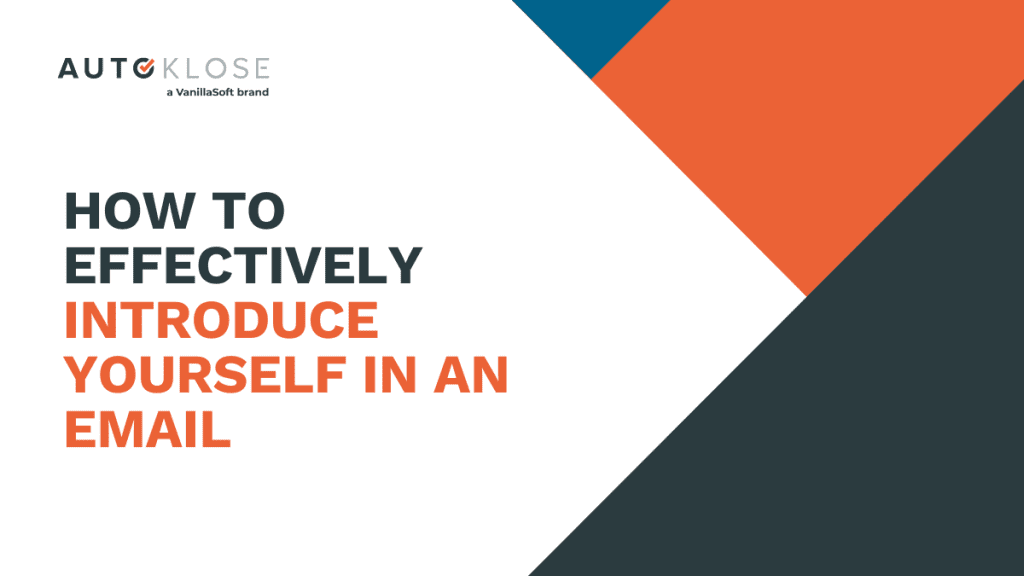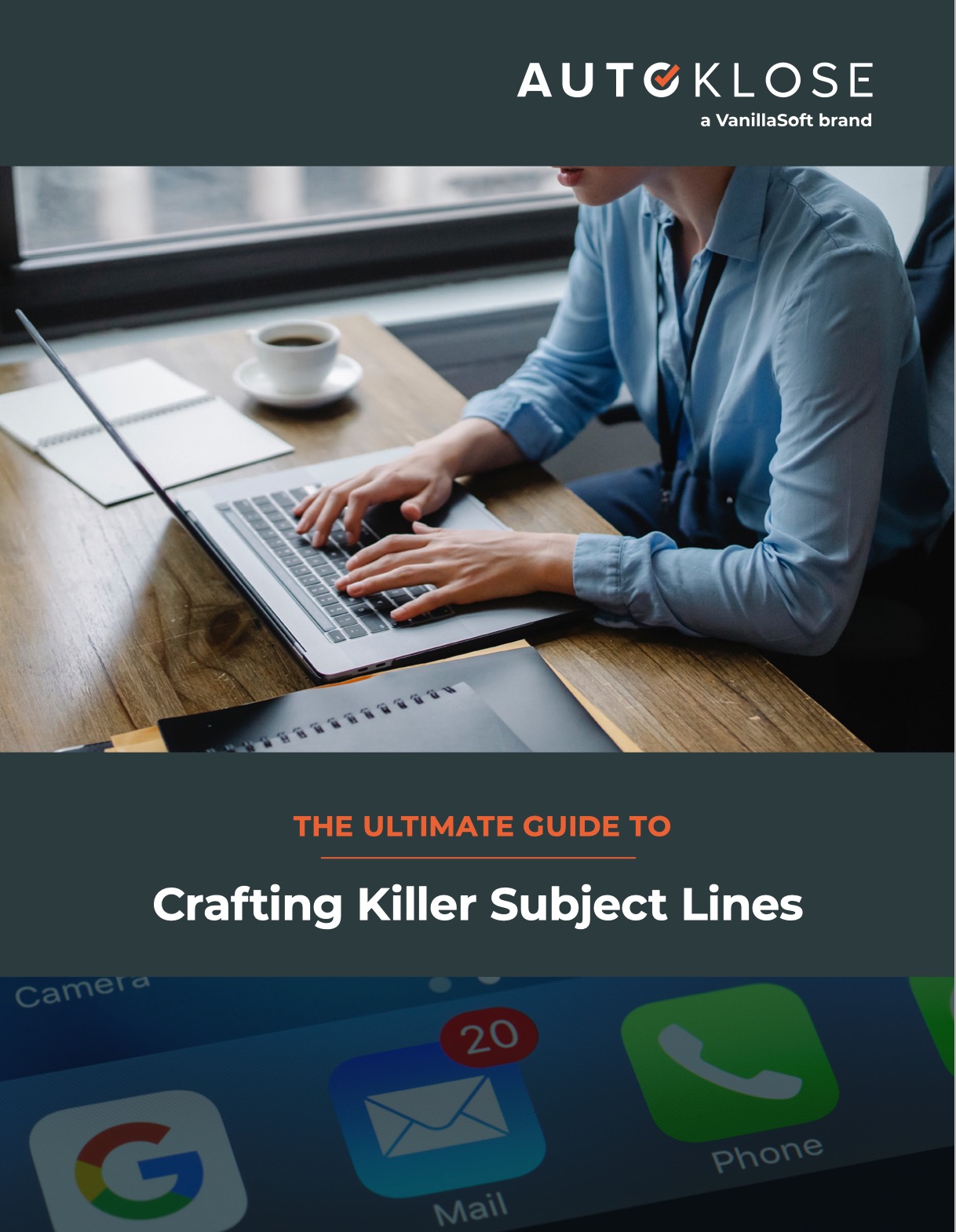
Reaching out to a person you’ve never had contact with before is challenging.
The first thing you should get right is capturing their attention and intriguing them enough to click on your email. But even after that, there’s a new hurdle to overcome — making a stellar first impression. Your prospects’ inboxes are packed with messages and pitches, so your every word counts, which is why the way you introduce yourself in an email matters immensely.
In this article, we’ll explore this process from the beginning and help you craft emails that prospects will open and respond to.
- 1. Catch Their Attention With the Right Subject Line
- 2. Adjust Your Greeting and Copy to the Industry and Context
- 3. Make the First Line About Them
- 4. Mentioned a Shared Similarity or Commonality
- 5. Bring Up a Mutual Connection
- 6. Tell Why You’re Reaching Out
- 7. Add Value
- 8. Always Have a CTA
- 9. Always Have a CTA
- In Conclusion
1. Catch Their Attention With the Right Subject Line
Generally speaking, people aren’t keen on opening emails from unfamiliar senders.
If you want to get them to open your email, your subject line has to be enticing and intriguing enough. Also, if you want them to see your email at all, avoid using salesy language and follow DMARC rules to improve your email deliverability.
You can learn the basics of creating compelling subject lines in our detailed guide.
Here are a couple of examples for different purposes and situations:
Networking subject lines
- Looking to learn more about prospecting?
- Is selling from home a trend that will stay?
- Hey Mike, I think you’ll find this post on prospecting useful
- A big fan of your blog/podcast/ here. I need some help…
Sales/Offers
- How about 30% off on premium features
- You don’t want to miss this
- Autoklose + XYZ = 30% growth
- Need some help with your email marketing?
Job seeking
- Shawn told me you are looking to hire an SDR
- I saw your job ad for a marketer
- Are you looking for an HR manager?
2. Adjust Your Greeting and Copy to the Industry and Context
It’s easy to overlook a greeting as a chance to keep your prospects reading, but you should be very careful about these couple of words.
Depending on who you’re reaching out to and the industry they’re in, it’s important to use a proper greeting.
For more conventional, old-school sectors such as government, finance, or law, stick to a safe bet — “Dear.”
However, if you want to get in touch with someone who works in a more casual industry such as fashion, sports, tech, media, or travel, it’s okay to opt for a more relaxed greeting such as“Hi,” “Hello,” or even “Hey.”
What you should avoid at all costs is using your prospect’s first and last name as it’s way too obsolete and generic, and you don’t want to come off as too stuffy.
Similarly, it’s not a good idea to use gendered terms like Mr., Mrs., Ms, or non-inclusive salutations like “Hi guys.”
So, as for the second part of your greeting, it’s currently best to use your prospect’s first name.

3. Make the First Line About Them
A compelling cold email opening line is something that will immediately capture your prospects’ attention.
Instead of the “me-me-me” approach and rambling about yourself, your company, and your products, make sure that the first thing you write in your email revolves around your prospects, their interests, challenges, pain points, and needs.
Don’t forget that people love to talk about themselves, and the best way to ensure they will keep on reading your email is to say something along the lines of:
- Your podcast is amazing, and it occurred to me to ask whether you ever thought about writing a book based on it.
- I decided to reach out after reading your blog post on the best sales strategies.
- Your career and accomplishments in sales have inspired me to follow the same path.
- Congratulations on your new position as CFO in Autoklose.
- I read that you’re an avid tennis player in your LinkedIn bio…
This way, you’ll show that you’re not a complete stranger but someone who’s acquainted with their career, and this will warm them up towards your cold outreach.
4. Mentioned a Shared Similarity or Commonality
Similis simili gaudet — like rejoices in like.
In order to make your first line even more relevant, do your research and try to find some kind of common ground — a shared interest, commonality, hobby, or preference.
Psychologically speaking, what we’re talking about here is a phenomenon called the Similarity-Attraction Effect. People are more likely to be attracted to those who share a similar set of values and beliefs.
And it’s a great idea to use this trick in your email outreach. By finding out more about your prospects on social media networks, websites, and other sources, you’ll find something that the two of you have in common.
Based on that, you can craft an introduction and strike the right chord with your recipient.
Something like:
- Peter, I’ve noticed that you’re in the same coin-collecting groups. It would be cool to connect and have a chat about it.
This is an excellent way to humanize your approach and build a more meaningful connection with your prospect.
5. Bring Up a Mutual Connection
Recommendations are important in the world of business.
Your email will be more likely to draw interest if you drop a common name.
Instead of being a complete stranger, you’ll easily become “a friend of a friend” or “an acquaintance of an acquaintance” and practically have someone vouch for you.
Naturally, before you decide to mention a mutual connection, it’s crucial to ask for their permission to use them as a reference. Since your prospect will most definitely want to verify your relationship and the context of your outreach, obtaining prior consent ensures that the mutual connection is prepared and willing to speak positively on your behalf.
6. Tell Why You’re Reaching Out
After you’ve sparked their interest in you, it’s time to tell your recipient what the reason for your email is.
Depending on what you want to achieve and what you expect them to do, you should clearly state your intentions.
The key is to make this explanation relevant to your recipient, that is, they need to understand from this section of your email what’s in it for them.
For example, if you’d like their help in learning more about a particular field, you can say:
- Your career and accomplishments in sales have inspired me to follow the same path. Is it possible for me to buy you a cup of coffee and have a chat about the options I have?
In case you want to book a demo or a sales call, you can go somewhere along the lines of:
- Mike told me you’re in the market for a sales prospecting platform for automating your sales outreach. Autoklose might be exactly what you need. Why don’t we have a quick call and I’ll show you how you can save 5 hours per sales rep a week?
What you need to do is make every recipient feel special and unique, and you can do that by tailoring your offer and email copy to their needs specifically.

7. Add Value
While most people are willing to help even if they don’t get anything in return, it’s a good idea to provide value to your recipients before asking anything from them.
As for adding value, it doesn’t always have to be a discount or something that has a monetary value.
A relevant blog post or industry report (not necessarily yours) can be a great way to offer your prospects something that they could use and show them that you have researched their company.
If you have a prospect who published a book, read it, leave a review, and send them a link in your email.
Or, why not suggest them a helpful tool or platform?
8. Always Have a CTA
No matter what the purpose of your email is, it needs to have a proper call to action.
This little element is a must as it eliminates any friction from the action you want your recipients to take.
For example, it can be a link to your calendar, webinar, offer landing page, or blog post.
Instead of asking them to book a meeting with you and engage in emailing back and forth, you can facilitate the entire process by giving them a link to your calendar so that they can find a slot and make an appointment whenever they like.
As for the form of your CTA, provide a short intro that will sum up your offer or demand and provide an instant link.
- Being in the sales industry, I’m sure that you’ll greatly benefit from reading the latest blog post on the best prospecting practices. Check it out: LINK
- If you have 15 minutes to spare and have a quick chat about the ways Autoklose can help you grow your business, book a call in my calendar: LINK
While it’s OK to be polite, don’t exaggerate and resort to phrases such as ”I would never ask you something like this, but…” or “I’d be forever grateful if you’d…”
This would imply that your recipient isn’t fair if they fail to do what you ask them to, and guilt-tripping someone is the worst thing you can do.
All that we’ve talked about so far should look like something like this:
SL: What a coincidence!
Hey [first name],
While I was browsing [social network], I noticed that you’re also a member of [name of a group]. Since both of us are interested in [a particular industry, niche, or issue], it would be wonderful to meet up and discuss [a particular pain point your company solves].
My company has been working on it for quite some time, and I’d like to hear your opinion about our solutions.
Check out my calendar and book a call when it suits you: [LINK]
Talk to you soon,
[your name]
This is, by the way, a sneak-peek email we used to promote our Templates section.
9. Always Have a CTA
Following up after the initial outreach is an essential, yet often overlooked, aspect of successful email communication, especially in the context of sales and professional networking.
This step underscores your genuine interest in establishing a connection and demonstrates your persistence and professionalism.
The importance of following up lies in its potential to keep the conversation going. It’s common for emails to get buried under a flood of incoming messages, or for recipients to delay responses due to busy schedules.
A thoughtful follow-up can serve as a gentle reminder of your initial outreach, bringing your message back to their attention. It also provides an opportunity to reinforce the value you can offer, further personalize the communication, and address any new developments or additional insights that may have emerged since your first email.
In Conclusion
To introduce yourself in sales emails effectively means mastering a nuanced balance of personalization, relevance, and respect.
Start by crafting a compelling subject line, personalizing your message, and demonstrating genuine interest in your recipient’s needs, as this combination will significantly increase your chances of making a lasting first impression.
Add a layer of credibility to your outreach by referencing mutual connections responsibly. Remember, the goal is to initiate a conversation that feels both meaningful and mutually beneficial.
These tactics will help you turn cold introductions into warm opportunities for collaboration and growth.
 The Autoklose
The Autoklose 


Leave a Reply
You must be logged in to post a comment.